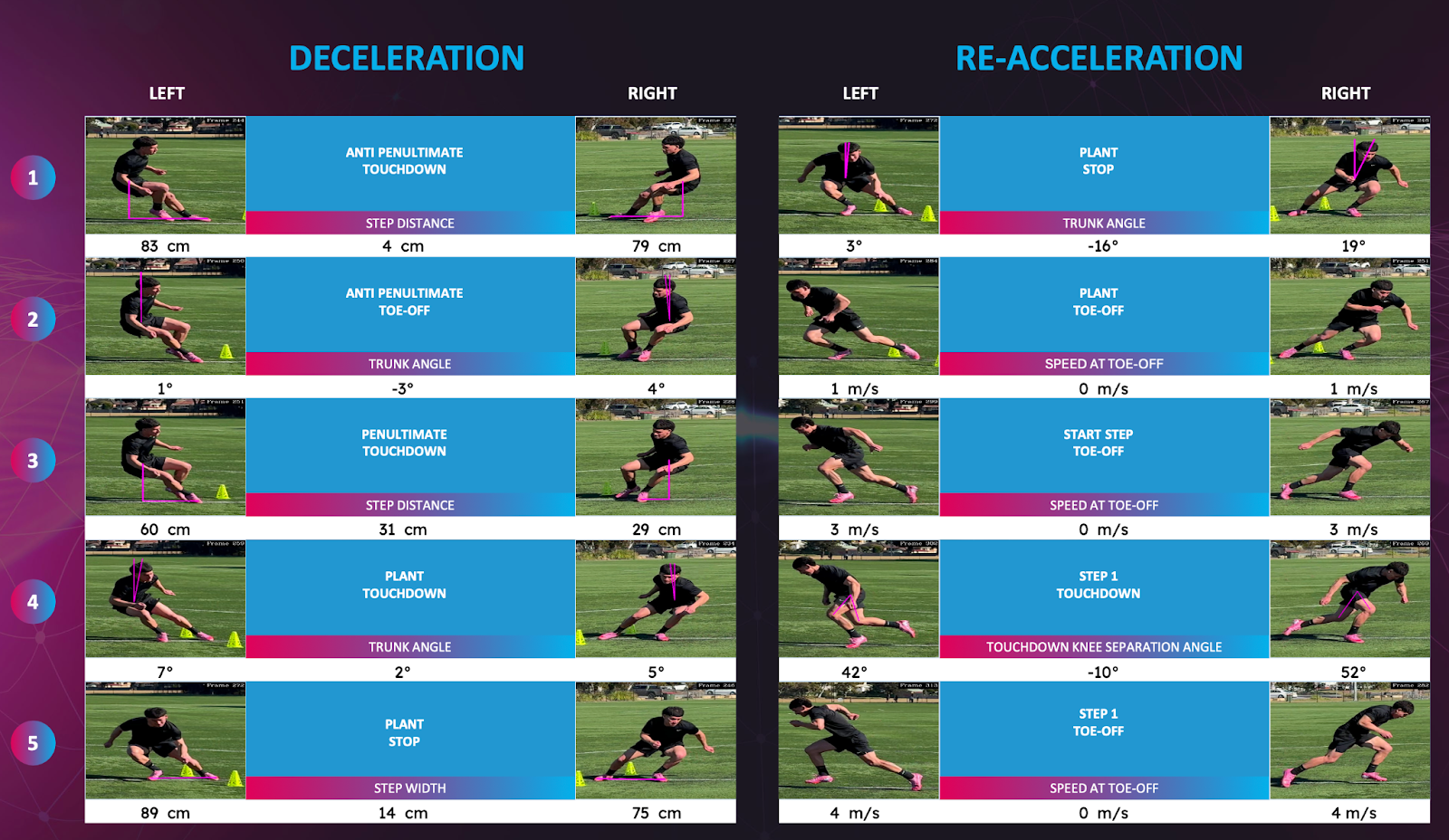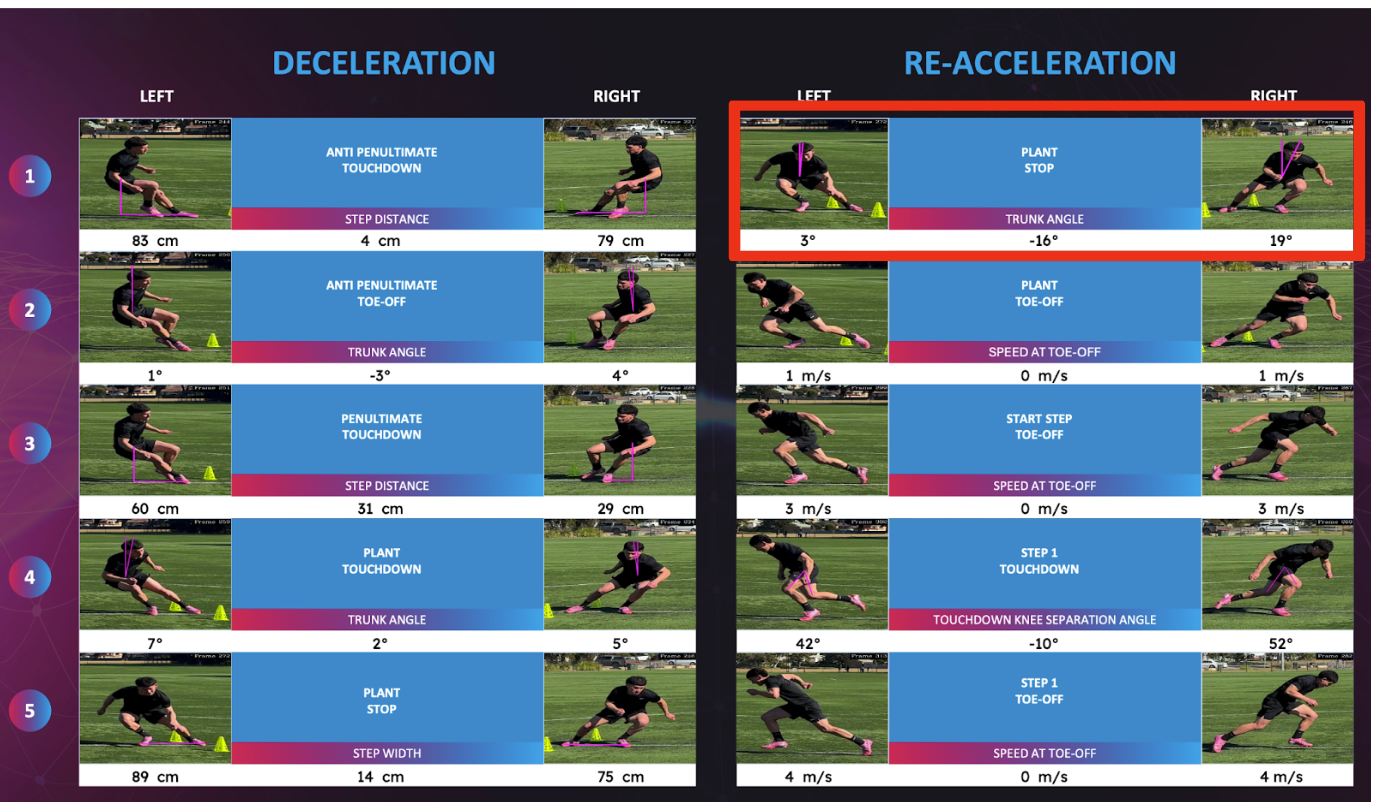- Remove the current class from the content27_link item as Webflows native current state will automatically be applied.
- To add interactions which automatically expand and collapse sections in the table of contents select the content27_h-trigger element, add an element trigger and select Mouse click (tap)
- For the 1st click select the custom animation Content 27 table of contents [Expand] and for the 2nd click select the custom animation Content 27 table of contents [Collapse].
- In the Trigger Settings, deselect all checkboxes other than Desktop and above. This disables the interaction on tablet and below to prevent bugs when scrolling.
In sport, split-second movements define outcomes. Change of Direction (COD), the ability to decelerate, shift, and reaccelerate is a fundamental skill that underpins performance and injury resilience across almost every athletic discipline.
Despite its importance, COD has historically been challenging to quantify with precision. Coaches and practitioners often relied on visual assessments or basic timing drills that lacked the nuance to identify asymmetries or inefficiencies.
That’s why we’re excited to introduce a new level of objective insight with the VueMotion Change of Direction Report, now available as part of our movement analysis platform.
Why COD matters
Whether it's a guard cutting across the key, a striker shifting to beat a defender, or a tennis player planting to chase a cross-court volley, athletes change direction constantly. COD performance isn't just about raw speed; it's about how effectively an athlete can:
- Decelerate under control
- Absorb and redirect force
- Reaccelerate explosively
Inefficiencies in any of these phases, particularly deceleration, can increase the risk of injury and reduce performance output.
New data, better decisions
Our latest COD report takes the guesswork out of direction changes by offering frame-by-frame breakdowns and key metrics such as:
- Early and Late Deceleration (m/s²)
- Ground Contact Time (GCT)
- Change in Hip Height (cm)
- Step Width and Trunk Angle at Plant
- Asymmetry percentages between left and right turns
When evaluating an athlete (pictured below), the report surfaces key asymmetries in:
- Late Deceleration (-5.80 L vs. -5.18 R)
- GCT Plant Step (0.68 s L vs. 0.57 s R)
- Trunk Angles at Plant Stop (3° L vs. 19° R)
On paper, both left and right 10-0-5 times are comparable (3.40s vs. 3.38s). But when unpacked through the VueMotion lens, we observe significant directional compensation—an insight that can directly inform programming, injury mitigation, and even return-to-play timelines.

Visualize Progress. Target Risk.
The COD report also includes longitudinal tracking, allowing teams to see how athletes respond to training over time. Whether recovering from injury or developing movement efficiency, this progress-over-time view equips support staff with data to make smarter decisions.
We're not just capturing motion—we’re decoding it, offering the tools to:
- Identify red flags before they become injuries
- Customize training programs to correct asymmetries
- Optimize return-to-play timelines with confidence
Elevate the Standard
Change of direction shouldn’t be evaluated by stopwatch alone. With our new reporting capabilities, VueMotion continues to lead the way in bringing science to the art of coaching. Performance isn’t just about how fast you go, it’s about how well you stop, shift, and go again.
Ready to unlock this next layer of athlete insight?
Reach out to your VueMotion rep or log into your dashboard to explore the new COD Report.

